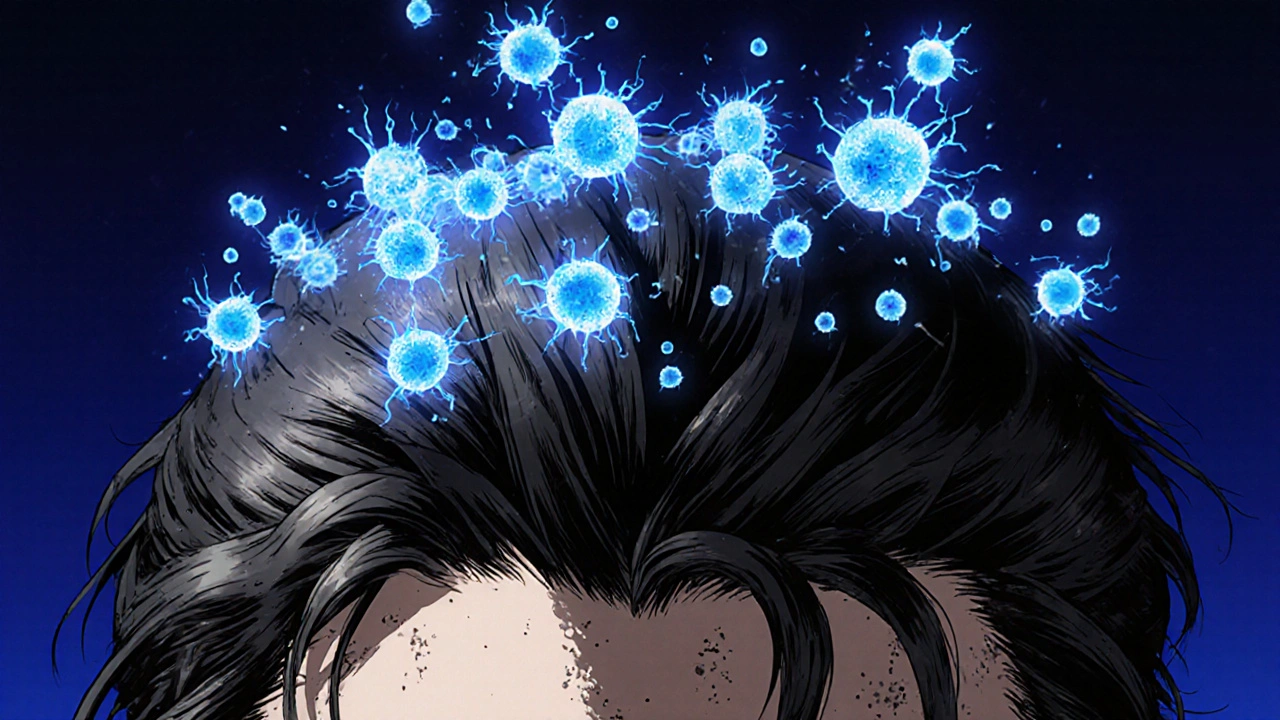dandruff treatment – Your Complete Guide
When dealing with dandruff treatment, the process of reducing scalp flakiness and irritation using medicated or natural approaches. Also known as flaky scalp remedy, it can involve shampoos, topical solutions, and lifestyle tweaks. You’ll quickly see that the right plan mixes chemistry, hygiene, and sometimes a bit of patience.
One of the biggest drivers of dandruff is the yeast Malassezia. Ketoconazole, an antifungal ingredient that targets Malassezia overgrowth works by disrupting the fungus cell membrane. Selenium sulfide, a mineral compound that slows down fungal growth and reduces scalp oil lowers the environment that the yeast loves. Zinc pyrithione, a zinc‑based agent that balances the scalp microbiome adds a gentle antimicrobial punch. For those who prefer plant‑based options, Tea tree oil, a natural essential oil with broad antimicrobial activity can be mixed into regular shampoo for an extra boost.
Common Ingredients and How They Work
Dandruff treatment isn’t a one‑size‑fits‑all. It usually starts with a medicated shampoo that contains one of the antifungal agents mentioned above. Ketoconazole shampoos are often recommended for moderate to severe cases because the ingredient directly attacks the yeast. Selenium sulfide works best when excess oil is the main issue; it calms itching while cutting down oil that fuels the fungus. Zinc pyrithione is a good middle ground—it’s mild enough for daily use and still keeps the scalp’s bacterial balance in check.
When an over‑the‑counter option isn’t enough, dermatologists may prescribe a stronger formula or combine ingredients. A typical prescription might include a higher concentration of ketoconazole plus a short course of a topical corticosteroid to calm inflammation. The corticosteroid isn’t a long‑term solution, but it can break the itch‑scratch cycle that often makes dandruff look worse.
Beyond shampoos, there are leave‑in treatments, scalp scrubs, and even dietary tweaks. Adding omega‑3 fatty acids or zinc‑rich foods can support skin health from the inside. Some people find that reducing sugar and refined carbs lowers yeast growth on the scalp. While these changes aren’t magic, they complement the topical steps and can lessen the frequency of flare‑ups.
Environmental factors also matter. Hard water can leave mineral deposits that irritate the scalp, making flaking more visible. Using a water softener or a clarifying rinse once a week can strip those residues away. Likewise, excessive heat from hair dryers or curling irons dries out the scalp, prompting it to overproduce oil as a defense. Letting hair air‑dry when possible or using a low‑heat setting helps keep the scalp ecosystem stable.
For those who love natural remedies, blending tea tree oil with a carrier oil (like coconut or jojoba) and massaging it into the scalp before shampooing can add antimicrobial benefits without harsh chemicals. A few drops of apple cider vinegar diluted in water also works as a gentle acidic rinse that restores the scalp’s pH, discouraging yeast growth.
If you’ve tried multiple products with no relief, it might be time to look for an underlying condition. Seborrheic dermatitis, psoriasis, or even a skin infection can masquerade as dandruff. In those cases, the treatment plan expands to include prescription‑strength steroids, vitamin D analogues, or antifungal creams applied directly to affected patches.
Tracking what works is easier than you think. Keep a simple log of the shampoo you use, how often you wash, any additional treatments, and how your scalp feels each day. Over a few weeks you’ll spot patterns—maybe a certain brand triggers irritation, or a particular ingredient consistently keeps flakes at bay. This data‑driven approach saves you from random trial‑and‑error and lets you fine‑tune your regimen.
All of these strategies—medicinal shampoos, complementary ingredients, lifestyle tweaks, and condition checks—form a toolbox for effective dandruff treatment. Below you’ll find a curated list of articles that dive deeper into each of these topics, from detailed ingredient comparisons to step‑by‑step usage guides. Browse through, pick the tips that match your situation, and start turning the page on flaky scalp today.
